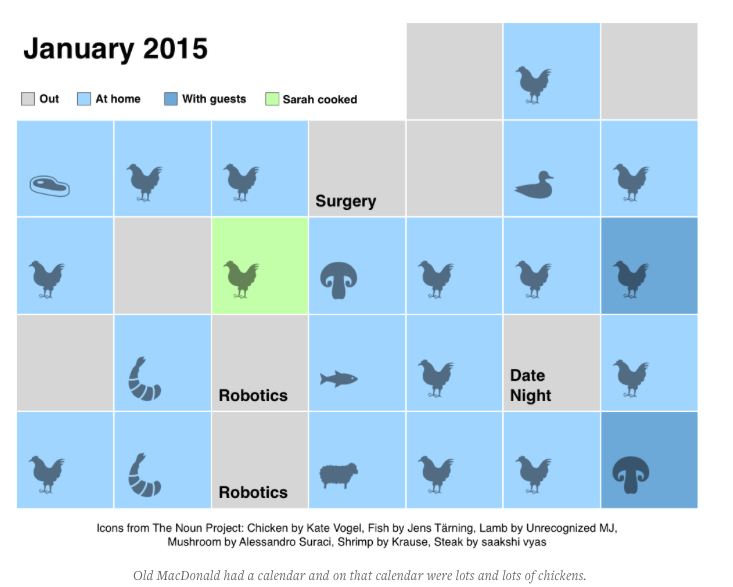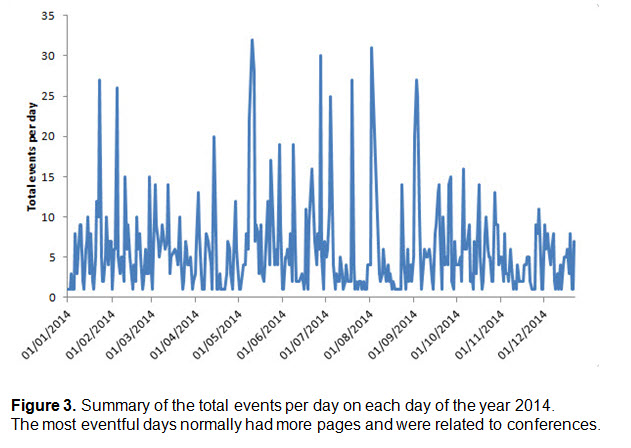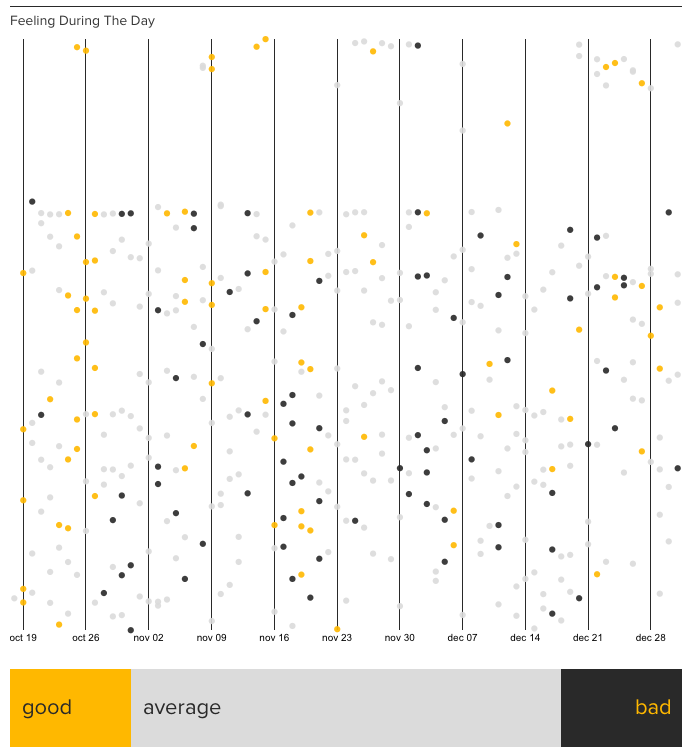What We Are Reading
Ernesto Ramirez
February 14, 2015
Enjoy this week’s list!
Articles
Would You Share Private Data for the Good of City Planning? by Henry Grabar. The use of personal, and typically private, data for municipal planning and research is becoming more common. Strava, Uber, and other companies are passing along their user data to government bodies interested in understanding their constituents. In this article, past projects are described and new ideas are put forth about this growing trend.
The social network for people who want to upload their DNA to the Internet by Daniela Hernandez. A wonderful piece of journalism on the growing OpenSNP platform for open user-donated genetic data. Take some time and read the whole thing. (Full disclosure: My 23&Me data is available on OpenSNP.org.)
What Cognition-as-a-Service should mean? by Debidatta Dwibedi. The promise of fitness trackers for many is that the use of them will improve one’s fitness. Dwibedi expresses the desire for a tool to make one wiser by helping the user avoid logical fallacies. There are tools that can help, like spaced repetition.
Connected Car: Quantified Self becomes Quantified Car by Melanie Swan.
Sensors sensors everywhere
Near and far
On your wrist
In your home
And in your car.
What On Kawara’s Analog Wisdom at the Guggenheim Has to Offer a Digital World by Ben Davis. A fantastic peek into “On Kawara: Silence” a recently opened retrospective hosted at the Guggenheim.
He was making art about the “quantified self”—the contemporary self-improvement craze for tracking and charting one’s personal data—not just before the fitbit, but before the handheld calculator.
What My Hearing Aid Taught Me About the Future of Wearables by Ryan Budish. A great article here about how to think about possible ways our technology with change and shape the world around us. Special consideration is given to our ever evolving relationship with the tools of wearable computing.
Show&Tell
I tried to quantify my sex life—and I am appalled (NSFW language) by Miles Klee. I went back and forth whether to include this here, but in the end I think it’s important to expose tracking of all types.
How I audited my daily media habits and improved the way I read by Lydia Laurenson. Lydia was concerned with the amount of bad content she was reading on the web.For a month, she rated the articles she read according to a 5-point scale with categories like “I’m actually angry I clicked this link” and “Wow, this is really cool or useful. I’m glad I saw this.” With these ratings, she was able to see which publications produced good contents, and which outlets gave her recommendations worth her time. You can check out her (empty) tracking spreadsheet here.

The Quantified Chef by Dan Brown. Dan doesn’t fancy himself a self-tracker, but was interested in understanding his cooking habits as the main dinner cook for his family. Some interesting finds and thoughts about what it means to collect data on yourself.

Using a Log Book and Excel To Assess Time Use by Morris Villarroel. Morris spoke about how he uses journals to track his life at our 2014 QS Europe Conference. In this post, he explains how he transfers hand-written data into Excel for more in-depth analysis.
Visualizations

Sid Lee Dashboard. Sid Lee, a creative agency, outfitted it’s Paris office with multiple sensors and data gathering systems powered by Arduinos to feed a beautiful real-time data dashboard. Make sure to click through for the interactive site and watch their short video.

Two Thousand And Fourteen by Tyler Baird. A sentence or two cannot do this amazing work justice. Click, read, and take in the 8,760 hours of Tyler’s tracked life.
Access Links
The BMJ Today: Patient Centered Care
Health Data Exploration Project Announces Agile Research Project Awards
FDA makes official its hands-off approach to regulating health apps and medical software
Small thoughts on large cohorts
Selling your right of privacy at $5 a pop
From the Forum
Continuous HRV monitoring
New Member
Separation of cloud vs local storage?


